(dis)appointment
INTRODUCTION
The (dis)appointment workshop was about art practices involving the physical and psychological experience of walking, subjective perception of city spaces and digital mapping based on the outcomes of those experiences. The main topics we covered were: the city as a space for deception, disappointment, danger, failure, and being lost and frustrated; urban spaces as a projection plane for dystopian imaginings.
The workshop consisted of theoretical and practical components. The theoretical part involved a brief introduction to the history of walking performance and art mapping as well as examples from the history of contemporary art as it relates to my own work. The practical part of the workshop was a walking performance which we developed together on days two and three. I introduced a mobile application called “Possible Rendezvous” which I am currently further developing with my colleagues. We used this app for the performance on day three.
The goal of the workshop was to learn about situative and walking practices in contemporary art as well as to deepen reflection of the situations generated in the urban landscape and to get the participants actively involved in performance.
WORKSHOP PROGRAM
Day one, November 17, 2017 / 5PM–7PM
We covered the theoretical basics which included a very brief introduction to the history of walking performance, art mapping and situationism, touching on key terms like Lettrism, dérive and psychogeography, as well as artists and theorists like Asgern Jorn, Constant, Santiago Sierra, Kollektivnye Deystviya, Heath Bunting, Janet Cardiff, Richard Long, Tehching Hsieh, Francis Alys; (film-makers) Jules Dassin, Patrick Keiller, John Rogers; (authors) Guy Debord, Henri Lefebvre, Karen O’Rourke, Edward Dimendberg. We also got into the technical aspects of mapping (tools, equipment, devices, software etc.).
I presented three of my own related projects (The Luminous Box, Open Power, Film Noir); And lastly we covered some technical aspects of mapping: equipment, electronic devices, GPS recorders, smartphones, cameras, audio recorders, laser digital distance measuring equipment and classic devices like compasses; Software & Online Platforms: WordPress, Google Maps, Google Earth, Scribble Maps, Open Street Map, Photoshop and Illustrator.


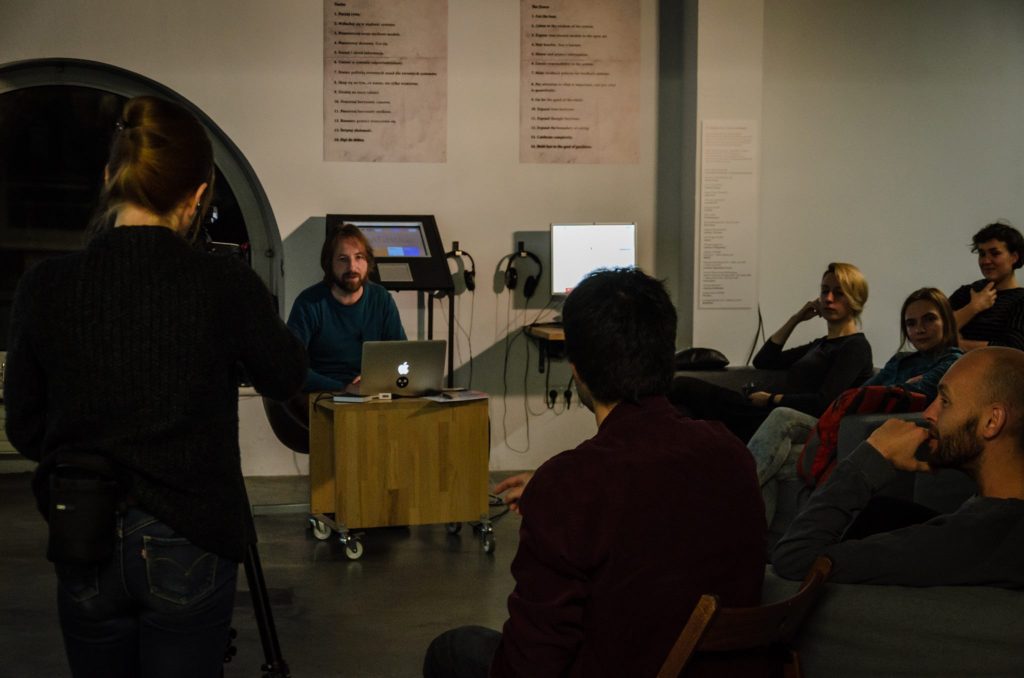
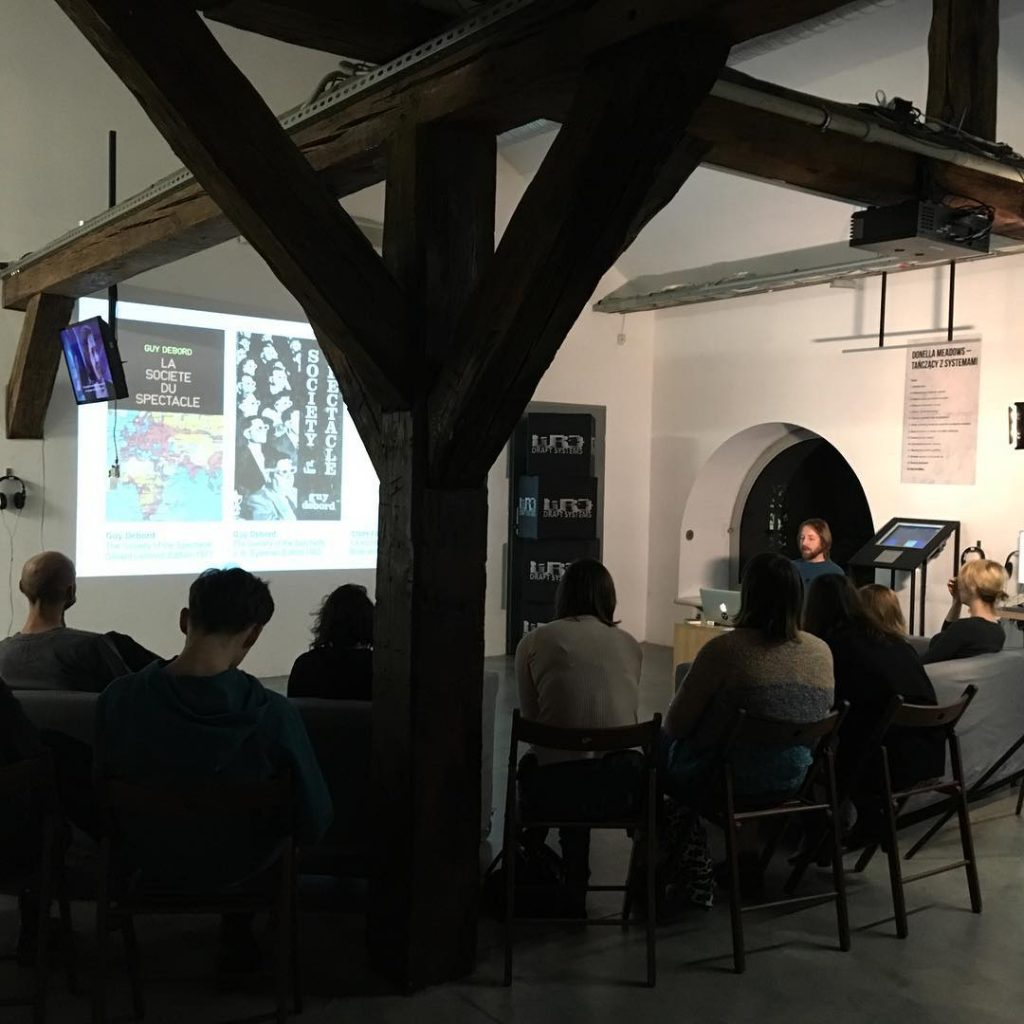
Day two, November 18, 2017 / 10AM-12PM
The second day was devoted to preparations for the performance on the third day. The day began at WRO Center, where I introduced the demo version of my “Possible Rendezvous” app.
The demo version was the main tool for the collective performance which took place on day three. The demo version was not designed as a mobile app, but rather a web app. That meant it only worked over a web browser. It had few downsides, which I corrected in the final app version. One of the main disadvantages was that the users were constantly dependent on fast internet connection and needed external power. A web app doesn’t secure users’ privacy and personal data as reliably as a mobile app would. Still, the web app was fine for a demo-run.
For the demo-run on day two, I limited the rendezvous area to up to 1km2 around the WRO Center (downtown Wroclaw). The participants only had one hour to get to their rendezvous locations. To help them recognise each other on-site, the participants wore paper masks shaped as a red location marker.
The demo-run went like this: Two matches met their appointments and two matches did not (they were (dis)appointed). Also, one person refused to participate in the demo. One of the successful rendezvous took place on the fire escape in the courtyard of an apartment building, and the second one – on a big square with public wifi which was important because of the need for internet connection. One rendezvous failed because of a software bug (one of participants got the wrong GPS coordinates), and the second fail was because the participants gave up (they were close to each other, but one of them turned back without waiting for their match).
After the demo-run we had a re-grouping at the WRO Center, where the participants could share their experiences and clarify any questions regarding the upcoming performance on the following day. By midnight, all participants received their invitations for their next rendezvous. The WRO Art Center promoted the “Possible Rendezvous” performance to their local contacts in order to engage as many participants as possible. Thanks to them, we had about 25 registered users on the “Possible Rendezvous” website.

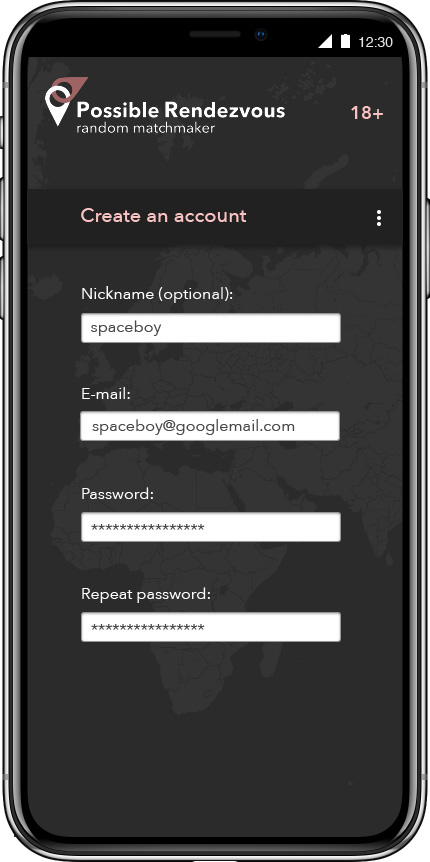



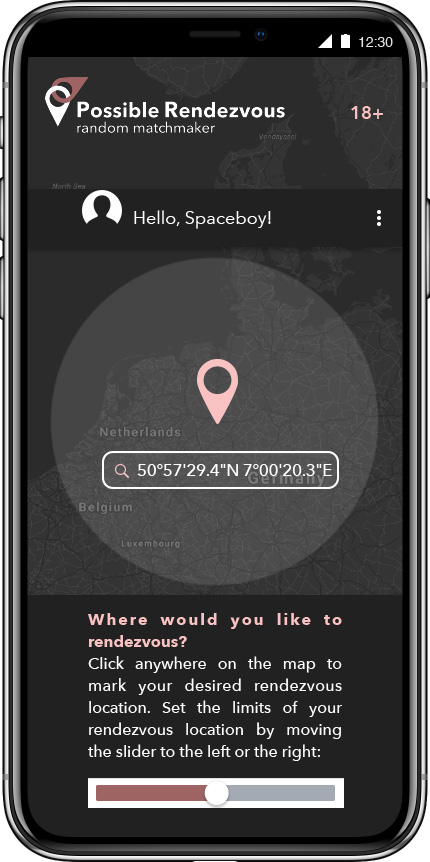
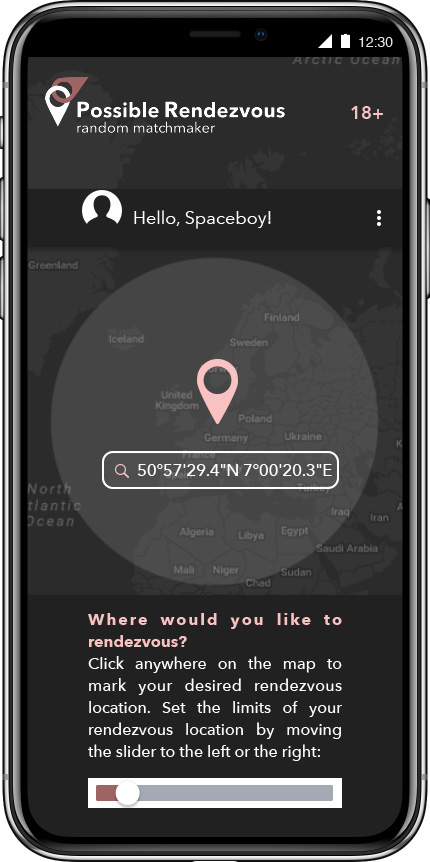
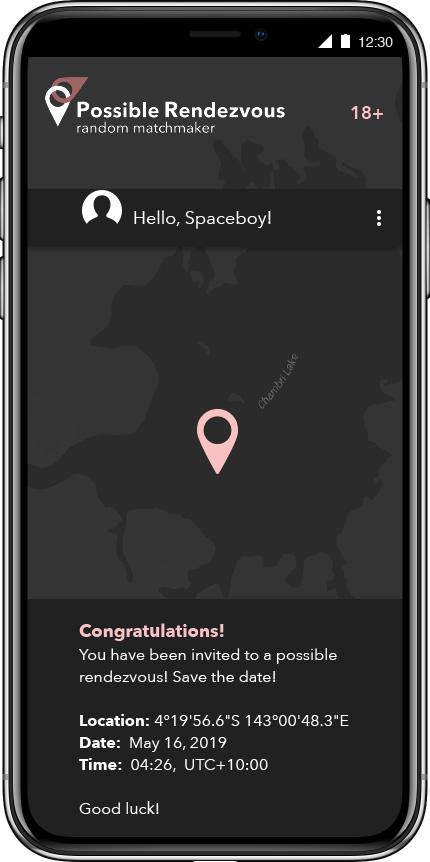
Day three, November 19, 2017 / all day
This was performance day: Each participant arranged their appointments using the app.
Our performance started at midnight. The rendezvous area had been extended to encompass the entire city of Wroclaw plus surrounding areas, a square around the city approx. 400 km2, and the time-frame was extended to 24 hours beginning and ending at midnight. Throughout the 24-hour period, participants attempted to reach their meeting places at the appointed times. The software sent 12 rendezvous invitations to 25 registered users. Because we had an odd number of participants, we had to make somebody a joker. The joker got an invitation to all of the appointments and got to choose which one(s) they kept, if any.
Chosen blind and randomly, the rendezvous invitations were completely inappropriate time-place combinations. None of the participants was able to complete their journey, and so there were no rendezvous. Nevertheless, everyone was charged with experiences which they were eager to share.
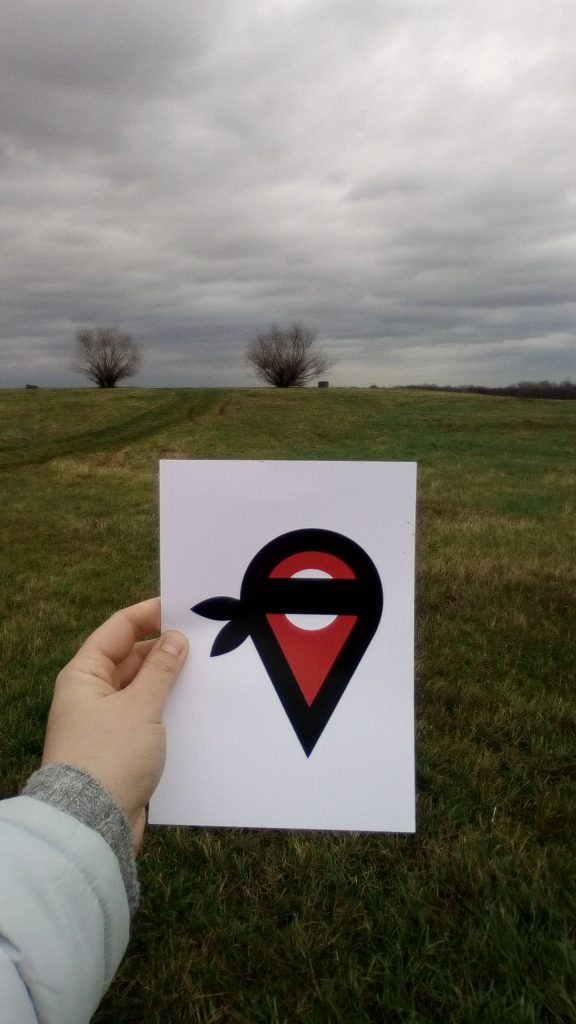



Day four, November 20, 2017 / 5PM–7PM
This was the final meeting with all the participants, devoted to reporting on the rendezvous and giving feedback about the workshop in general.
99% of the rendezvous failed because of participants’ inability to reach their destinations, 1% failed because of a software bug. Two rendezvous were actually kept by one participant each, but the second participants either didn’t dare to set off for the rendezvous at all or returned midway without reaching their meeting places. There was one rendezvous where both participants reached their meeting place, but because of a software bug they were there at different times. The joker ignored the invitations.
Those who accepted their invitations and managed to be at their rendezvous places on time couldn’t contain their stories. Of course, it was frustrating to have had to overcome such obstacles, but they were really excited about everything they experienced.
One female participant, a 22-year-old art student, received an invitation to a rendezvous shortly before 6AM in a distant suburban area at the edge of an industrial dump. She took her boyfriend with her for her safety. They had to take two busses, but for the most part, they had to walk through suburban areas in the morning twilight without roads or pathways. The whole journey took nearly 1,5 hours but they still got to the place on time. The couple waited there for over an hour. Unfortunately, her rendezvous partner decided to stay home. The couple took lots of smartphone photos to document their entire journey. This participant had a very long and humours story to tell, filled with details that came across like pictures themselves. Her missing rendezvous partner (a 24-year-old design student) was present at the re-grouping and enjoyed listening to her story. She apologised for not having been there. She explained that she decided not to come mainly because of the inconvenient location and time, but also because she worried about her safety.
The other participant who kept her rendezvous was also a female participant, a 25-year-old architecture student. Her rendezvous was at 10:30PM. The location was also in a distant suburban area, near a railway. She came alone and waited about an hour for her match. She waited in darkness holding a marker mask in front of her face along the railway that was occasionally illuminated by trains passing by. She took a few smartphone photos to document her experience. Her rendezvous partner didn’t come either. This participant was also present at the re-grouping on day four, and he listened to her report with regret because he didn’t make it to the rendezvous. The 26-year-old architecture student had started to go to the rendezvous location but turned back midway because he doubted that his rendezvous partner would make it that far.
I also participated on day three. I was invited to rendezvous at 7:45AM in a distant suburban area, a former soviet military base that seemed to be informally used for car racing. Public transit wasn’t available that early, so I had to walk the entire way. I was almost there, but shortly before finding the exact location, my phone died, so I lost my GPS coordinates and couldn’t get to the exact meeting place. I masked my face and wandered around, hoping to be recognised by my rendezvous partner. I met a group of men trying to pull an expensive car out of a ditch. I shouted “Possible Rendezvous”! They ignored me. I asked them in English if they had seen somebody with a similar mask around. They didn’t speak English and asked me something I didn’t understand, a mix of Polish and English, and pointed somewhere in the forest. I figured they were showing me where they had spotted my masked rendezvous partner. When one of them invited me into his racing car, I hopped aboard, hoping to be driven to the rendezvous place. It was a fatal misunderstanding. This guy just wanted to show off his great racing car in all its glory. We raced for half an hour on steep forest trails, falling into ravines and soaring over hills, twirling around the trees. The crazy driver was shouting in Polish and laughing while I was vainly trying to explain myself. Finally, he let me out of the car and disappeared. I was alone in a completely different unknown place and without my smartphone, I had officially lost my orientation. What I didn’t know then was that a glitch in the system had generated my rendezvous partner a meeting time for 5PM. My rendezvous partner, a 30-year-old curator, got to the location on time, but of course, I was long gone. She needed less time to get to the meeting place because public transit was running by that time. The right spot turned out to be just before the racetrack, so she didn’t have the pleasure of an adventure ride like I had had. She simply walked through boring deserted suburban areas, waited for me for a while, wondered if she got the right place and eventually went home disappointed. I took many photos with my NIKON while I was walking to the place. Unfortunately, I didn’t manage to document my forest race because I was too shocked and had to hold on for dear life!
I didn’t have the chance to meet all of the 25 registered users. Four participants who didn’t take part in the performance still showed up for the wrap-up on the final day. For the most part, they were inspired by the “Possible Rendezvous” idea. After everyone had given their accounts, they offered me some constructive feedback regarding further development of the app. The WRO Center workers enjoyed hearing about all of our adventures and concluded by saying “thank you for showing us our own city!”